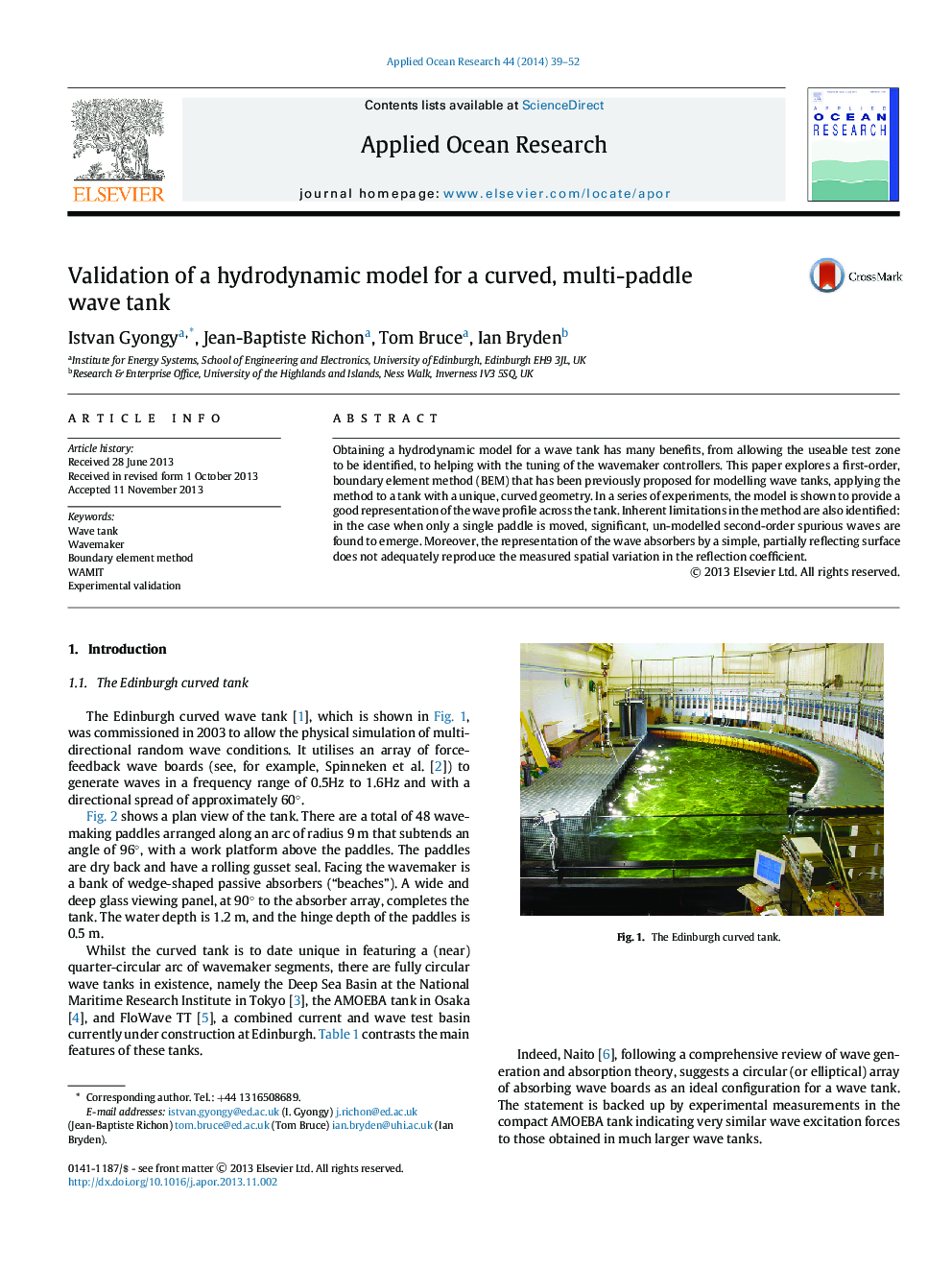| Article ID | Journal | Published Year | Pages | File Type |
|---|---|---|---|---|
| 1720147 | Applied Ocean Research | 2014 | 14 Pages |
•A first order, boundary element method for modelling wave tanks is explored.•The method is applied to a curved tank and validated in single and multi-paddle tests.•Good predictions are obtained of the general wave height profile across the tank.•The model does not fully reproduce the wave absorbers and ignore spurious waves.
Obtaining a hydrodynamic model for a wave tank has many benefits, from allowing the useable test zone to be identified, to helping with the tuning of the wavemaker controllers. This paper explores a first-order, boundary element method (BEM) that has been previously proposed for modelling wave tanks, applying the method to a tank with a unique, curved geometry. In a series of experiments, the model is shown to provide a good representation of the wave profile across the tank. Inherent limitations in the method are also identified: in the case when only a single paddle is moved, significant, un-modelled second-order spurious waves are found to emerge. Moreover, the representation of the wave absorbers by a simple, partially reflecting surface does not adequately reproduce the measured spatial variation in the reflection coefficient.
